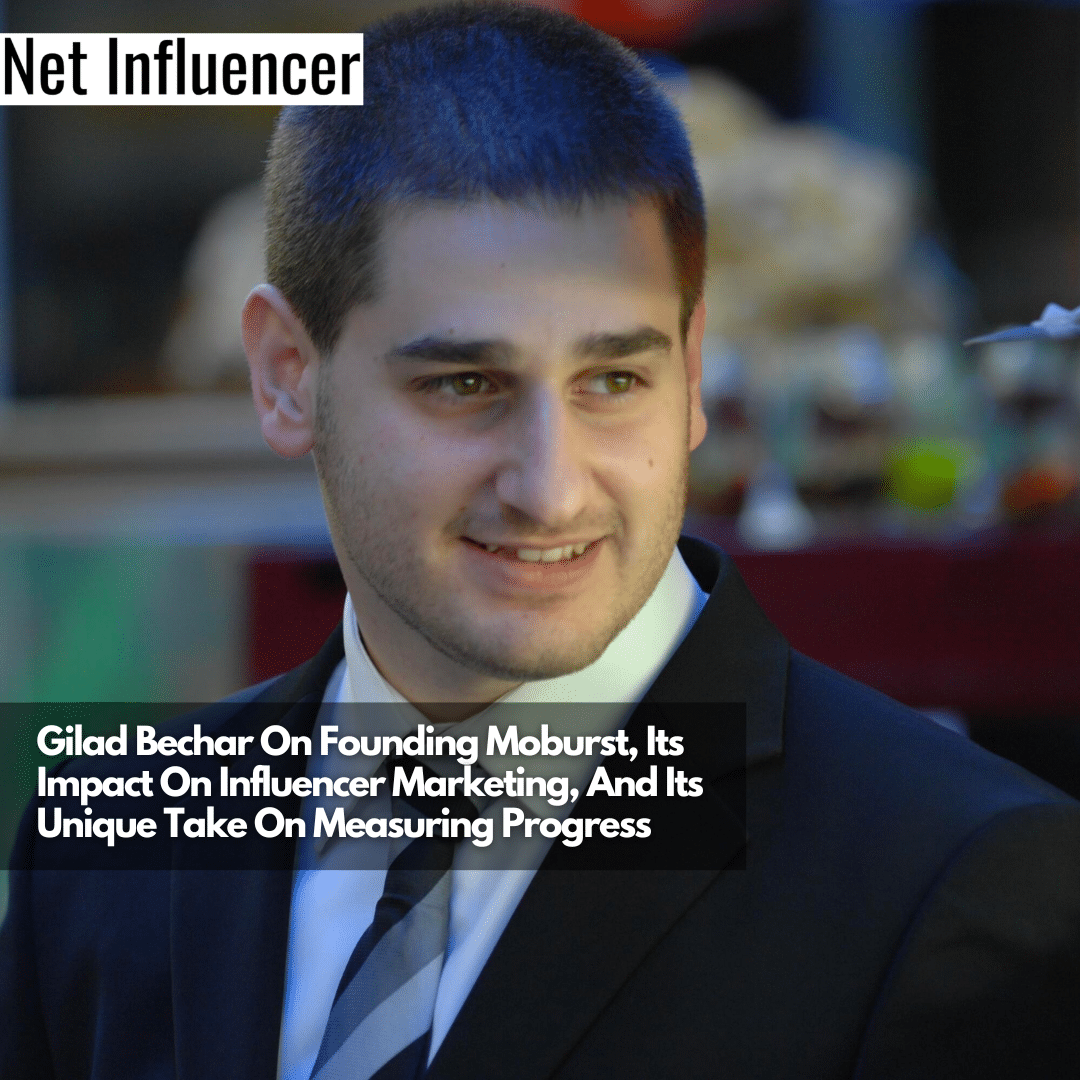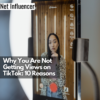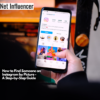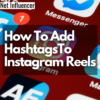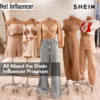Technology
Gilad Bechar On Founding Moburst, Its Impact On Influencer Marketing, And Its Unique Take On Measuring Progress
After seeing how digital agencies failed to properly and accurately measure how an app performs, Gilad decided to start Moburst to change the industry for the better. Ten years after, Moburst has helped countless brands and has become one of the most sought-after and trusted marketing agencies in the world.
Who is Gilad Bechar?
Gilad Bechar is the CEO and founder of Moburst. Gilad started Moburst in 2013. Back then, mobile marketing was something that all agencies claimed to know how to do, but the quality of their work was extremely low. Moburst was founded to deal with mobile marketing, but actually doing it right. Everything we did back in the day was purely about mobile apps, as this was a very unserved niche.
Before, if you approached a digital agency, they would ask you to pay for a media test. If this media test had worked, the digital agency would have done “amazing work.” But if it didn’t, the agency would blame the app for having a poor in-app conversion rate and then encourage the client to fix the product and come back to them for another round of media buying later on. Most clients don’t even know where to start “fixing the app,” and they would go to find another agency. For Gilad, this didn’t make any sense, and felt it wasn’t the right way of looking into an app.
Gilad started looking into the apps’ onboarding flow and benchmarking the usage, finding the places where the users dropped off and offering solutions for the things that were underperforming within the app’s flow. Moburst found huge success in the beginning working with startups, as for them, quick iterations and the importance of fixing the user flow were as important as life or death. It’s a known fact that 90% of startups won’t survive the first two years, and Moburst knew how to help not just with media buying and creative, but actually helping with the entire user journey of mobile app promotions.
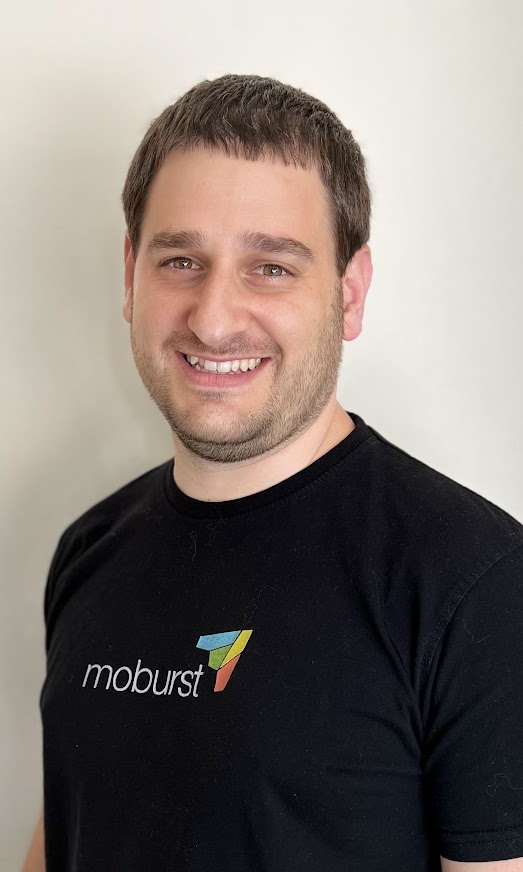
Working with startups made Gilad’s team very edgy with how they measure every dollar they spend. They must avoid committing mistakes as these can cost the lives of the company. Developing unique know-how and turning this know-how into smart technologies and automation helped Moburst raise $2.4 million, which is very uncommon in the agency world. This amount helped the company grow much faster and enter the US market with two offices.
Moburst continued evolving through the years and started getting larger accounts. In 2015, they signed with Google and worked with Google Maps, YouTube, Gmail, and 30 other products in 26 languages. Gilad adds, “That opened up our capabilities very extensively and showed our proof towards quality.”
Moburst is now ten years old, with around 100 employees in 16 locations. Most teams are working remotely, and Gilad continues to employ individuals and paying salaries in five different currencies. Although this setup is challenging for the company’s CFO, Gilad takes pride in trying to find the best talents with the most unique experience worldwide.
As the CEO of Moburst, what is your primary vision for the company?
Gilad wants Moburst to become one of the largest mobile-first digital agencies focused on performance. He recognizes the huge number of inefficiencies in the market today, especially on the influencer side, and how most influencer agencies solely measure brand awareness.
Gilad adds, “You have to benchmark each marketing act you do and set hardcore metrics you must meet — whether it’s sales, subscriptions, signing up to newsletters, or other KPIs. I feel like the industry must evolve on that on that side. Most agencies in the influencer space still sell ‘air’ to the brands, or as they call it, ‘a number of impressions’ as a success metric, and that doesn’t make any sense to me.”
Five years from now, Gilad hopes to see Moburst being a 750-employee company and the largest independent digital marketing agency focusing on its clients’ growth and continuing to deliver new category leaders to the market.
What was one of the biggest challenges Moburst faced in its early years, and how did you overcome it?
In the early days, Moburst didn’t have all the efficiency of monitoring tools available today. If a client was getting 50 or 500 hours a month, the company wouldn’t have any way of actually seeing that because they didn’t have the infrastructure to report by project or for each subtask.
Moburst also reached a point where they had to discontinue serving clients who weren’t profitable six years ago. Gilad recalls, “We fired many of our clients and employees to try to get into a place where we can actually have a healthy business that doesn’t rely on its investors.”
It was a challenging year for the company, but they had no other choice but to take this route to ensure that they continued without a need to raise more capital. They relaunched in 2017, which caused Gilad to move back from New Jersey to Israel for nine months. The move was necessary for him to make sure that the key team members and processes were rebuilt from the ground up.
When he relocated back to the US, he saw that letting go of some clients and employees in the past was the best decision for the company. Since then, Moburst has been growing at a steady state by at least 30% every year and, in some years, even by 230% growth.
Could you please tell us about Moburst’s main offerings and services? How do they differentiate from competitors in the market?
Moburst has five main departments, namely:
- Marketing Strategy. Here, Moburst helps clients with various strategies for projects, such as social strategies, digital strategies, analytics, and many others. This department aims to help clients conduct benchmarks of their competitors and set expectations about what is possible or feasible based on their budget and product. This department is in charge of making SWOT analysis, brand and messaging strategy, investor decks with detailed proforma reports, and many other types of deliverables.
- Organic Awareness. This is where Moburst does Search Engine Optimization, App Store Optimization, Conversion Optimizations, and localizations. These efforts get the products ranked really high on the relevant platforms to get more organic search traffic. This department ensures that its clients are getting a lot of organic downloads in the App Stores and a huge volume of organic traffic to their websites.
- Creative and Content. The third department involves creating concepts, designs, and video productions, managing the social media presence, and developing all of the assets for digital campaigns. This department relies on more than 600 creators weekly to create ads for their clients and have full production capabilities including 3D modeling, 360’ elements, and even AR\VR production capabilities.
- Media. This department is responsible for buying the media on search platforms and social networks, working with influencers on multiple platforms, and spearheading different advertising efforts, like ads on smart TVs, programmatic media buying, and email marketing.
- Product and Development. This is the last department involved in product consulting, website development, digital transformation, UX-UI, and app development.
These five departments work interdependently for Moburst to offer 24 different services, which deliver what their client really needs in order to move from one point to another to meet their KPIs and overachieve the specific objectives of their marketing journey.
With the rise of the creator economy, how is Moburst positioned to take advantage of this trend?
On the creator side, Moburst has two different offerings: influencer marketing and the army of creators. Gilad looks at these as two very different buckets as they have different teams for each and are treating these engagements very differently.
When working with influencers, they decide what they can and cannot do as it might impact their own brand. For example, they can turn down any offers to wear something funny and scream as loud as they can on their videos as it might hurt their own brand.
In the army of creators, Moburst works with 600 creators who are a bit more like paid actors. These individuals also know what filters to use on TikTok and Instagram, understand the ins and outs of those platforms, and will create any content for Moburst and its clients. Gilad adds, “This is where we can ask for things that the influencers will not do, but the creators will definitely do, as it won’t be posted on their own profiles anyway. They might have thousands of followers, and we won’t select them due to their follower base, but rather their charisma and characters”
In other words, the army of creators is all about creating ads, while influencer marketing is more about using the influencer’s follower base and trust to maximize the results.
How do you see the role of influencer marketing evolving, and what impact does it have on the strategies employed by Moburst?
Gilad shares that many brands don’t know how to go through TikTok, Instagram, and other social media platforms to see how people talk about their brands. There are plenty of brand monitoring tools today, but Moburst takes a different approach.
They give their clients a full view by analyzing hundreds of posts, whether the content is more of talking trash about the brand or saying that the brand has changed their lives for the better. They’ll also look into their client’s competitors and find relevant hashtags for the brand.
Gilad comments, “I think the power of influencers is huge. It usually looks authentic, so people tend to trust it more than ads.” And because of that, results are usually better when clients incorporate influencer marketing as part of the mix.
How does Moburst ensure its clients get the best ROI from their influencer marketing campaigns?
Moburst makes sure that they’re measuring every part of the user funnel. This means they’re providing every influencer with a direct link, so Moburst can easily measure the number of taps on those links.
They also measure the organic uplift to ensure they capture the full value: the direct impact of the link AND the number of downloads or website visits beyond the standard benchmark of what we expect to see on a standard day without influencer activity. They measure other things visible on social media, like impressions, comments, and likes, but these engagement metrics don’t give them the bottom line. Gilad says, “The bottom line needs to be measured much deeper with the specific link and the organic that comes on top of that to measure the success of the campaign.”
How does Moburst use data and analytics to improve its services?
Moburst pays more than $200,000 annually for subscription tools that allow them to use several data tools. These tools allow the company to help its clients fit into the right influencer and look at different metrics.
When going through these processes, they’re looking into specific segments, filtering by hundreds of parameters through 5.5m influencers to choose from. They’ll match everything related to the audience, demographics, age, gender, and country. They’ll also look at the influencer’s followers to have a better understanding of how many of these followers are real or fake users. They match the right time of day and the right day of the week based on past performance with each influencer and enable to calculate of how much will it be worth to spend on each influencer and what will be worth to offer each collaboration based on the math of matching criteria with the campaign.
Moburst has seven different tools in place and is looking at every influencer on many different verticals to make sure that they will be the ultimate fit for the campaign. Moburst also provides the benchmark of each specific niche, watching what works best for the brand’s competitors.
Gilad admits that their processes require a huge amount of research and investment in tools, but they get unparalleled performance due to that. The amount of time and effort the company spent to develop its methodologies and incorporate different tools to drive performance has been worth it, as the results are unarguable.
What role do you see AI and machine learning playing in Moburst’s future strategies?
Moburst is currently using different AI tools on its dashboards. For instance, finding anomalies, capturing organic uplift, and other things of that nature. They’re currently automating processes involved in developing strategies and the ability to get insights.
Moburst is currently working on specific tools that allow them to analyze at which point of a video users start churning. This way, they’ll know how to make a header automatically pop-up at that time to get the user to the point where an interesting part of the video starts.
Gilad adds, “I think that AI can definitely help us identify those specific crucial points where the users are abandoning. And then identify how do we make small modifications on that asset.”
Can you share a success story of a campaign that Moburst has run that demonstrates its effectiveness in the influencer marketing space?
Moburst worked with a large fitness brand that usually gets around $7 to $8 cost per download. Within the app, users need to start a trial using Apple Pay to start a subscription. The cost to get a new user to subscribe was around $82 on average.
Moburst introduced influencer marketing to the app, and from the first $150k, they managed to get the cost per download to drop to $2.11 on average per user, which is three to four times better than all of the brand’s existing marketing initiatives. After the download, we saw that the cost per subscriber dropped to $17, which gave them almost 5x lower cost per subscription.
For Gilad, working with this client is one of the most exciting successes because it was such a long journey, yet Moburst was able to create a big impact performance-wise.
How do you see Moburst evolving over the next few years? Are there any markets or sectors you are particularly interested in expanding into?
“We are trying to see how we are becoming of a full service,” Gilad says. The company saw that once they’re able to help a client on one angle but still have missing pieces in other areas, clients would team up with another agency. This collaboration doesn’t always go smoothly as different agencies often go in different directions and have to discuss who gets to lead the company’s marketing strategy.
In the future, Moburst wants to be in charge of the entire marketing growth and responsible for the results. They’ll continue to expand and acquire a few more companies in the next few years. They are looking for amazing teams that are already doing something exceptional that Moburst doesn’t offer to their clients yet. For example, PR as it’s something that Moburst isn’t doing just yet.
Gilad continues, “We want to build some more pieces into the pie and be able to serve our clients end-to-end with all of their digital transformation needs and make sure that their growth will be consistent in all of those areas.”
Can you share any insights on the current state of the influencer marketing industry?
Gilad believes the influencer marketing industry is still measuring the wrong things, like engagement and impressions. At the end of the day, the industry should care more about performance. “I feel like you have 5.5 million influencers out there that you can actually fit into specific campaigns, but no one really knows what are the metrics or what happens right after posting,” Gilad explains.
As time goes by, agencies and platforms will eventually have those metrics — and these metrics should be about measuring actions that happen because of that endorsement or story.
The most interesting parts aren’t the things one can actually check on, like how viral the post got, but what action took place because of that, the ROI, or the lifetime value created due to certain creators. These things aren’t often measured or connected. Gilad feels this is where the industry needs to continue drawing, so brands will be able to set aside a specific budget and know what to expect in return.
Presently, most of the agencies will just talk about impressions or reach after being given a budget. These pieces of information are flat and don’t provide the value that clients are looking for.
Lastly, what advice would you give to businesses looking to enhance their digital presence or working with influencers for the first time?
Gilad encourages businesses to ask hard questions and not just allow agencies to choose an influencer solely based on the agency’s past relationships or the influencer’s engagement and number of followers. Businesses must ask how much it would be worth for them to pay for that influencer and what type of results they can actually expect from the influencer.
For Gilad, asking these hard questions will get the fluff out of the equation and will allow businesses to talk about objectives. Gilad reminds businesses that objectives are the most important parts. Businesses can incentivize the influencers by paying the influencer a certain amount of money once they achieve a certain objective. This can create long-term partnerships and are very significant for both parties.
If businesses can’t create a win-win out of that partnership, then they shouldn’t go into that engagement. “So as long as the agency or platform will talk to you about impressions or just engagement rate, you should know you are not in the right place,” Gilad concludes.


